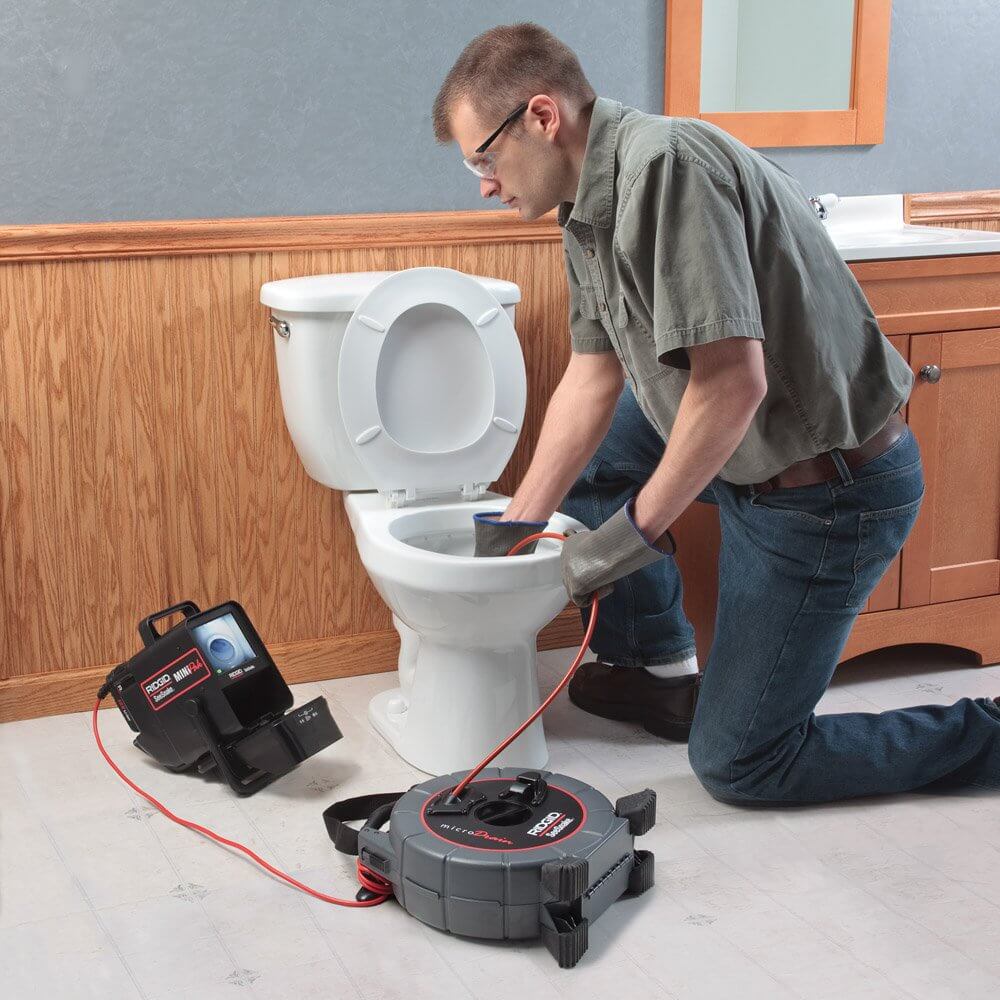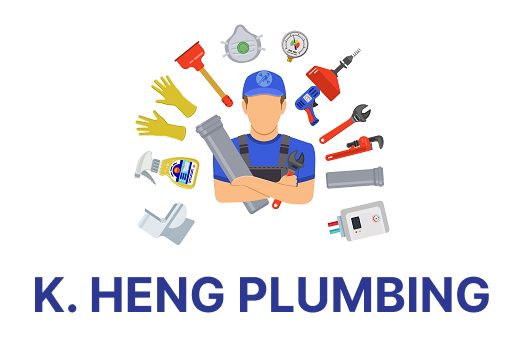 1 Apr 2025
1 Apr 2025
Toilet bowl chokes are not just inconvenient; if left unfixed, they can lead to significant issues. A blocked toilet can cause water damage and disrupt your daily routine. Understanding the common causes and possible remedies for toilet bowl chokes is essential for effectively resolving this problem. This article aims to guide you on what to do if you encounter a clog and, importantly, how to prevent it from happening again in the future.
Step 1: Identify the Common Causes of Toilet Bowl Choke
Generally, toilet bowl choke originates from some practices and the way people flush in the toilet. To prevent chokes in the future, it is important to understand some of the usual causes.
Everyday Habits Contributing to Clogs
Many people unknowingly practice daily habits that can cause toilet clogs. For instance, flushing excessive amounts of toilet paper can lead to pipe blockages. While toilet paper is biodegradable, flushing too much of it can overwhelm the system and cause clogs.
Non-Flushable Items Ending Up Causing Blockages
Objects such as tampons, sanitary pads, baby diapers and wet wipes should never be flushed. These items do not dissolve like toilet paper and as such can lead to severe blockage in the drain. It is always appropriate to ensure that such items are disposed of in the trash bin.
Problems Associated with Old Type Toilets and Low Pressure
The older models of lavatories have insufficient pressure to flush waste. This could lead to blockages and their occurrence could be quite often. Replacing the old toilet set with a new, highly efficient type is the solution to this problem.
Problems Stemming from Slow Draining and Blocked Vents
The slow flow of water in the toilet bowls may be a result of a clogged vent pipe or sewer line. By letting air into the plumbing system, vents assist in preserving the right flushing pressure. This pressure might be lower due to blocked vents, which can lead to sluggish drains and frequent blockages.
Step 2: Take Prompt Measures When Your Toilet Bowl Choke
Taking quick action when dealing with a blocked toilet can stop the overflow and additional damage.
Initial Measures to Prevent Overflow
As soon as the water supply starts overflowing from your toilet, turn it off. Find and turn the valve in a clockwise direction behind the toilet. This prevents more water from getting into the bowl.
Using Hot Water to Break Up Clogs
Blockages may be cleared out in the toilet bowl by pouring hot water into it. Make sure the water is hot but not boiling since the porcelain might be harmed by very high heat. To help the water dissolve the obstruction, pour it slowly.
The Role of Liquid Dishwashing Detergent in Clearing Blockages
One of the advantages of using liquid dishwashing detergent is that it can lubricate and thus facilitate free passing of the blockages in the pipes. First, add a generous amount of detergent to the bowl, then pour the hot water. After using it, it is advised to allow it to rest for a few minutes before flushing.
How Vinegar and Baking Soda Can Help Unclog Your Toilet
The use of vinegar and baking soda together can be effective in breaking up debris that causes blockages. First, pour around half a cup of baking soda into the toilet bowl, then half a cup of vinegar. Wait a few minutes for the mixture to fizz and break down the blockage, then flush with hot water. Let the mixture rest for some minutes to dissolve the clog, and then rinse with hot water.
Step 3: Use Tools and Seek Professional Help for Severe Clogs
Sometimes, there is a need to undergo more complex procedures to deal with a persistant toilet bowl choke. It might be necessary to use tools or consult a professional to get the job done.
Effectiveness of a Plunger in Resolving Toilet Chokes
A plunger is a simple apparatus that is used, among other things, to clear the blocked toilet. Just remember that it’s important to create a good seal over the toilet drain and then give it a hard plunge. The obstruction may be removed by the suction created by this. Till the water flows out normally, repeat as necessary.
When to Use an Electric Pump for Tough Blockages
In cases of severe blockage, an electric pump is more efficient than a plunging tool. These pumps make high pressure to ensure that the blockage is cleared quickly. They are particularly effective for blockage due to objects that should not be flushed down the toilets.
Benefits of Calling a Professional Plumber
If the clog remains when you have followed all the above-mentioned methods, perhaps you need to seek services from a professional plumber. If you suspect your home has a serious plumbing problem, it is best to call a plumber since they possess the necessary skills and equipment to identify the problem and solve it. They can also identify underlying issues in your system, which may lead to the formation of more clogs in future.
Expected Costs and What to Consider When Hiring a Plumber
The cost to hire a plumber varies depending on the type of work that needs to be done. It is always recommended to get a quotation before the work starts and the plumber must be appropriately accredited and covered by the insurance. This ensures quality of service and helps avoid any loss that could occur.
Step 4: Prevent Future Toilet Bowl Choke
The best way is always to prevent toilet bowl choke rather than to face them. To maintain a clog-free toilet, these are some of the measures you need to embrace in your everyday routine life.
Proper Disposal of Waste and Avoiding Non-Flushable Items
Do not flush anything else other than the toilet paper and human waste from the bowels. Other materials such as wipes, sanitary pads, and baby diapers should be dumped into the dustbin. Educate every member of the house on what is okay and what is not okay to flush down the toilet bowl to avoid clogging.
Regular Maintenance Tips to Keep Your Toilet Bowl Clear
You should take care of your toilet to avoid clogging. This includes checking to ensure that there are no leakages, inspecting the flushing mechanism and cleaning the outside of the bowl to remove dust and debris deposits. You also should consider hiring a professional plumber and having your system checked at least once a year.
Importance of Upgrading to Modern Toilet Models for Better Performance
There are several reasons why older toilets are vulnerable to clogs, relating to their design. Contemporary toilet bowls tend to utilize less water and yet offer a stronger suction force. In some cases, changing the model to a newer one helps minimize clog occurrence and enhance the toilet’s efficiency.
Step 5: Address Related Toilet Issues
The recurrence of toilet bowl choke can be avoided by comprehending and resolving associated problems.
How to Deal with Slow Flushing and Bad Odours
Slow flushing may be a sign of a vent problem or partial blockage. Maintain a clean toilet and remove small blockages using an auger or snake. If unpleasant smells persist around, look for leaks and make sure your toilet is correctly sealed to the floor.
Addressing Toilet Bowl Stains Caused by Mineral Buildup
Mineral accumulation might discolour your toilet and lower its effectiveness. Make use of a toilet bowl cleaner to get rid of stains from hard water. To keep the bowl clean and stop accumulation, scrub it frequently.
Fixing Common Plumbing Vent Blockages to Prevent Chokes
One common problem is when the vents get blocked; this leads to slow draining and constant clogging. The plumber snake should be used to clear any obstruction that may be present. If the blockage is severe, a professional plumber can use specialised tools to clean the vent thoroughly.
Repairing Sewer Line Problems to Avoid Frequent Toilet Clogs
Multiple drain clogs might occur concurrently due to problems with the sewer line. Common reasons include sediment accumulation, broken pipes, and tree roots. Using a camera, a professional plumber may examine your sewage system and suggest the best course of action, such as hydro-jetting or pipe replacement.
How To Clear Toilet Bowl Chokes?
1. Start with hot water and detergent
If your toilet’s clogged but not overflowing, try this simple fix first. Pour a mug of liquid dish soap into the bowl, then follow with a bucket of hot (not boiling) water. Let it sit for 15 minutes. The soap helps break down greasy bits and eases the choke. After that, flush. You might be surprised how often this works.
2. Use a plunger the right way
Most people have a plunger at home, but few use it properly. Make sure the rubber cup covers the drain fully. Give it 10–15 strong pumps. If the water starts to drain, you’ve cleared the blockage.
3. Baking soda and vinegar trick
Pour ½ cup of baking soda into the toilet, then add a cup of vinegar. Wait 20 minutes, then flush with hot water. This fizzing combo can dislodge build-up stuck in the pipes.
4. Call in a professional if nothing works
If the toilet bowl choke won’t budge, or you’re dealing with frequent clogs, it’s time to get a plumber. There might be something stuck deeper in the system that needs special tools.
Toilet Bowl Cleaning & Maintenance Tips
-
Clean regularly — not just the seat
Don’t just wipe the top. Use a toilet cleaner and brush to scrub under the rim and inside the bowl at least once a week. This stops limescale, rust, and waste from building up. -
Don’t flush anything odd
Toilet paper and what your body produces — that’s it. No wipes, tissues, pads, cotton buds, or food scraps. These are the top causes of blockages. -
Flush twice if needed
If you’ve used more paper than usual, flush once mid-way and again at the end. This helps move waste further down the pipe, reducing the chances of a toilet bowl choke. -
Keep your toilet tank in check
Make sure the flush works properly. If water runs too slow or the tank doesn’t fill, there might be an issue with the flush valve. Replace it if it’s old or faulty. -
Get an annual plumbing check-up
Like your car, your plumbing needs a once-a-year inspection. A quick look from a professional can save you from a messy disaster later.
Like your car, your plumbing needs a once-a-year inspection. A quick look from a professional can save you from a messy disaster later.
4 Signs of Toilet Bowl Choke
Water Drains Slowly
If water drains slower than usual after flushing, this could be the first sign of a toilet bowl choke. A slow drain means something is blocking the flow within the pipes, stopping water from moving freely.
Frequent Clogging
Constant clogs are a strong sign of a toilet bowl choke. If your toilet blocks often despite proper use, the problem might be deeper within the pipework. Regular blockages shouldn’t be ignored.
Gurgling Noises
Strange gurgling sounds from the toilet bowl can signal trapped air caused by a partial choke. These noises often happen after flushing or when other taps or toilets are used.
Bad Smell from the Toilet
A foul smell from the toilet bowl or nearby drain can point to waste buildup. This usually happens when a toilet bowl choke stops proper flushing and waste gets trapped.
